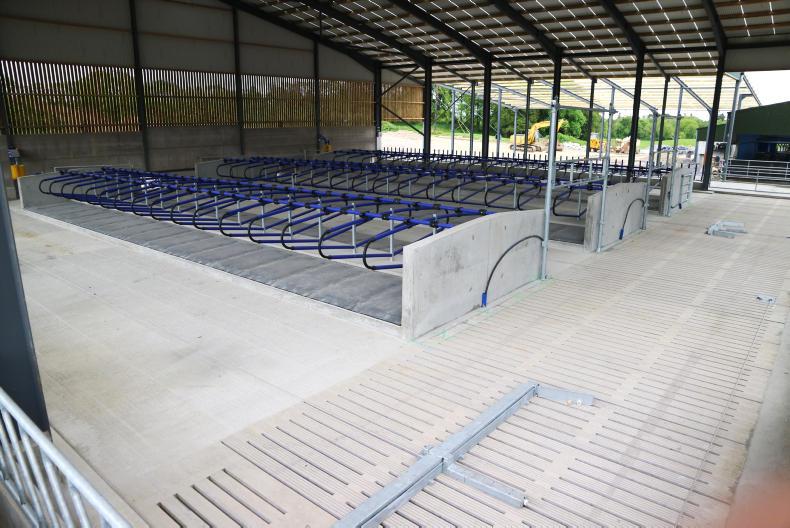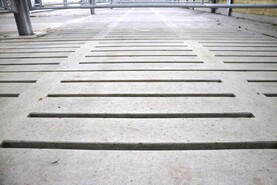Representatives from Shared Environmental Services (SES) laid the blame firmly at the door of DAERA for continued delays in farm planning applications when they met with the Stormont Agriculture committee last Thursday.
SES was established in 2015 when responsibility for planning moved from the then Department of Environment to the 11 local councils.
Based at Mid and East Antrim Council, the narrow remit for SES is to provide guidance and advice to planners related to habitats regulations and specifically the impact of new developments on European Designated sites (Special Areas of Conservation and Special Protection Areas).
The body has come in for criticism from farmers for effectively putting a block on planning applications within 7.5km of a designated site due to thresholds for ammonia being exceeded.
While a DAERA operational protocol advises that any new development that contributes less than 1% of the critical load for ammonia emissions at an environmental site is acceptable, SES introduced its own guidance which put this threshold at 0.1%.
In October 2019, that guidance was legally challenged by the UFU and subsequently withdrawn. But officials made clear last week that they are not working to DAERA limits.
“DAERA has accepted for well over two years that its operational protocol does not necessarily meet with the requirements of the habitats regulations,” argued Paul Duffy from SES.
Describing the DAERA guidance as “out of date”, he said that SES has to provide advice to councils that complies with the habitats regulations.
“If SES continued to apply DAERA’s operational protocol, it wouldn’t be doing its role,” he added.
In practice it means that there are some planning applications that initially meet the DAERA limits.
However, SES advice to councils is that it cannot determine that there will be no adverse impact on protected sites. As a result, the application is being sent back to DAERA for further comment.
“Since April 2020, DAERA has been consulted on 24 such applications and to date, has not responded on any of these outstanding consultations,” Duffy told MLAs.
The SES representatives also maintained that it agreed with the UFU to pull the guidance in 2019 on the understanding that DAERA would be publishing a consultation on a new operational protocol and ammonia action plan within “a matter of weeks”.
Letter
Last summer, the issue was raised with DAERA Minister Edwin Poots, with a formal letter then sent to him on 24 November 2020 requesting an update on when a consultation would be released.
According to SES officials, they were told that a daft ammonia strategy would be complete by the end of the year.
“DAERA has still not published a strategy. That is causing great uncertainty in the planning process, and leading to delays in applications affected,” said Nicola Rowles, a director at Mid and East Antrim Council.
Read more
NI planning guidance withdrawn after UFU legal challenge
NI parties oppose strict ammonia proposals
Representatives from Shared Environmental Services (SES) laid the blame firmly at the door of DAERA for continued delays in farm planning applications when they met with the Stormont Agriculture committee last Thursday.
SES was established in 2015 when responsibility for planning moved from the then Department of Environment to the 11 local councils.
Based at Mid and East Antrim Council, the narrow remit for SES is to provide guidance and advice to planners related to habitats regulations and specifically the impact of new developments on European Designated sites (Special Areas of Conservation and Special Protection Areas).
The body has come in for criticism from farmers for effectively putting a block on planning applications within 7.5km of a designated site due to thresholds for ammonia being exceeded.
While a DAERA operational protocol advises that any new development that contributes less than 1% of the critical load for ammonia emissions at an environmental site is acceptable, SES introduced its own guidance which put this threshold at 0.1%.
In October 2019, that guidance was legally challenged by the UFU and subsequently withdrawn. But officials made clear last week that they are not working to DAERA limits.
“DAERA has accepted for well over two years that its operational protocol does not necessarily meet with the requirements of the habitats regulations,” argued Paul Duffy from SES.
Describing the DAERA guidance as “out of date”, he said that SES has to provide advice to councils that complies with the habitats regulations.
“If SES continued to apply DAERA’s operational protocol, it wouldn’t be doing its role,” he added.
In practice it means that there are some planning applications that initially meet the DAERA limits.
However, SES advice to councils is that it cannot determine that there will be no adverse impact on protected sites. As a result, the application is being sent back to DAERA for further comment.
“Since April 2020, DAERA has been consulted on 24 such applications and to date, has not responded on any of these outstanding consultations,” Duffy told MLAs.
The SES representatives also maintained that it agreed with the UFU to pull the guidance in 2019 on the understanding that DAERA would be publishing a consultation on a new operational protocol and ammonia action plan within “a matter of weeks”.
Letter
Last summer, the issue was raised with DAERA Minister Edwin Poots, with a formal letter then sent to him on 24 November 2020 requesting an update on when a consultation would be released.
According to SES officials, they were told that a daft ammonia strategy would be complete by the end of the year.
“DAERA has still not published a strategy. That is causing great uncertainty in the planning process, and leading to delays in applications affected,” said Nicola Rowles, a director at Mid and East Antrim Council.
Read more
NI planning guidance withdrawn after UFU legal challenge
NI parties oppose strict ammonia proposals






 This is a subscriber-only article
This is a subscriber-only article










SHARING OPTIONS: